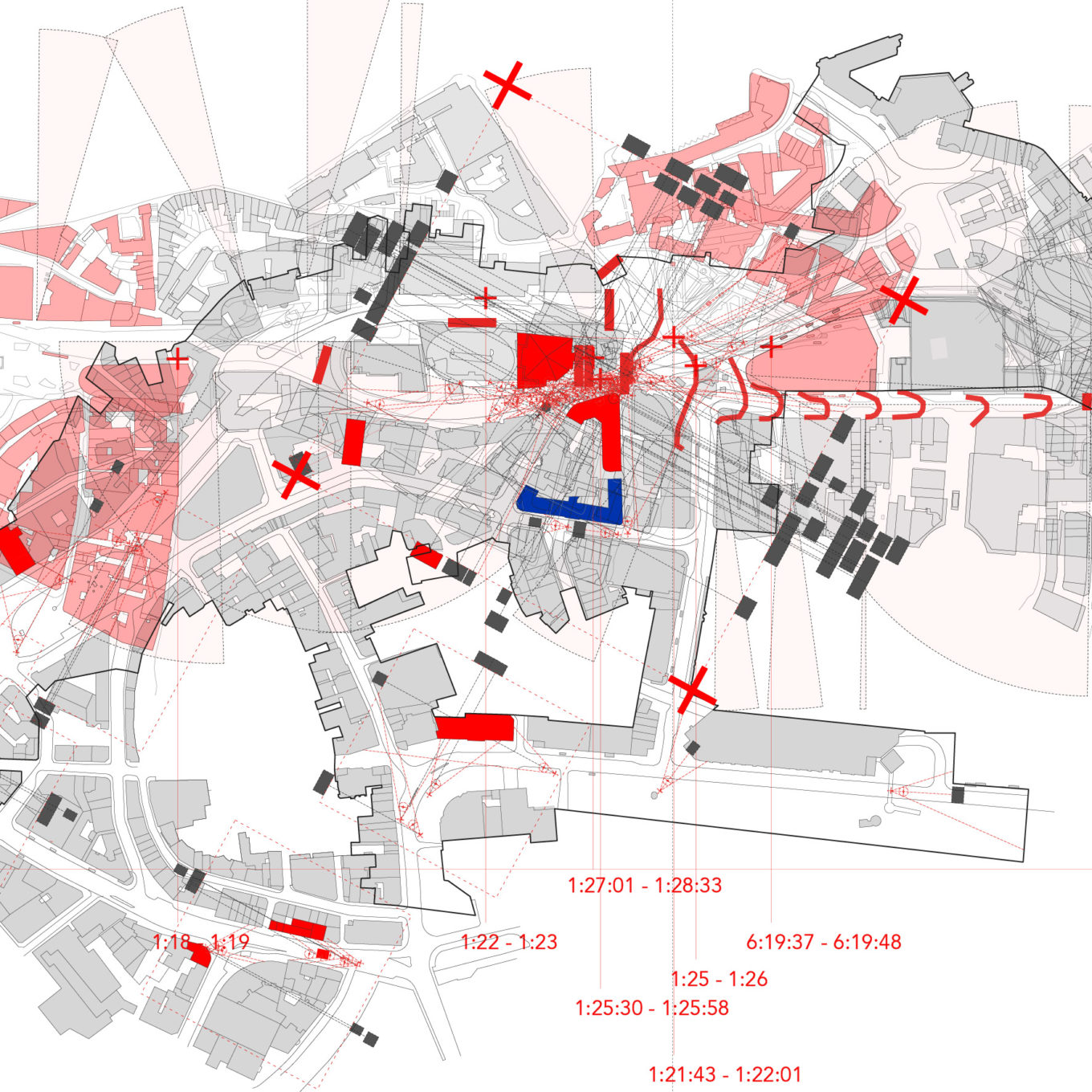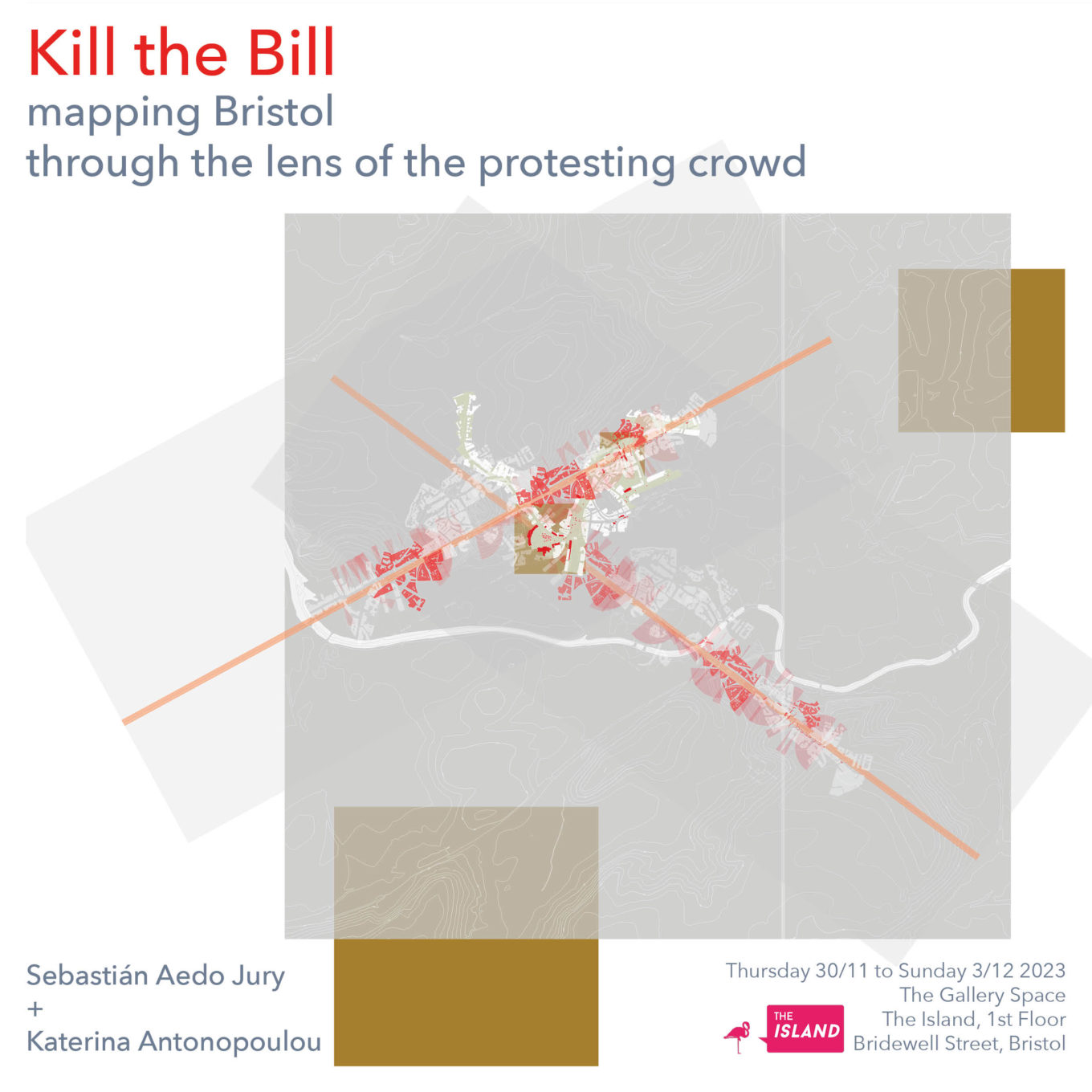Kill The Bill – Mapping Bristol Through The Lens Of A Protesting Crowd
On the 21st March 2021 a protest for the right to protest escalated into a situation which no one could have predicted. Or could they? An upcoming exhibition at The Island examines how a city’s architecture and live imaging on social media can provide a visual map of an event.
As the resulting fire and arrests at the protest took place just around the corner from The Island we were interested to talk to one of the creators, Katrina Antonopoulou (a Lecturer in Architectural Design at the University of Liverpool) to find out more about this research project.
Hi Katerina, can you please explain your area of research.
My work focuses on mediated representations of cities and on the politics of the image. The co-creator of this project is Sebastián Aedo Jury, is a Lecturer in Architecture at the University of Portsmouth; His work concentrates at the intersection of architecture, media and visuality. We both engage with what is commonly called ‘design-led research,’ in other words we explore how design methodologies (via drawing, mapping, modelling, animation, etc.) can be used to raise new research questions and to investigate the spatial consequences of urban phenomena.
Can you explain what ‘mapping Bristol through the lens of a protesting crowd’ means?
In this project we work with the digital recordings (via mobile filming and photography) of the political protest, and we ask how these can inform alternative ways of representing the city. We are interested primarily in the imagery that comes from within the protest, in other words the photographs and videos captured by protesters and published in social media, gathering the multiple perspectives inside the space of action. We engage with mapping and drawing (and in this exhibition modelling too) to expose the space of commons in the city as it emerges from the events and its visual mediations, as well as the multiple realities and subjectivities at play. With visual communication playing such an important role in the way we understand the world, cities are often projected as uniform and continuous constructs. And as cities they get aestheticized and pictorialized, alternative and more troublesome situations get repressed and displaced. Our project aims at bringing such hidden realities to the forefront and at using them to shape diverse urban representations.
Why did you choose the Bristol Kill the Bill protest as an example of mapping?
Bristol is the first case study in our ‘mapping protest’ study, followed by Glasgow and London. We chose Bristol as a starting point for two main reasons. Firstly, because this is a place with a long and fascinating history on social movements. Secondly, we thought that the theme of the Kill the Bill movement was very relevant to the overall objectives of the project, as this is a protest in defence of the right to protest freely in the future. We also came across an impressive number of images circulating in social media around the specific events and wanted to work with them.
How did the architecture of Bristol affect the outcome of the protest?
Well, this is what we are trying to find out! We strongly believe that the city is not merely the background or the ‘stage set’ for protest, but instead an active agent in the expression of public dissent. One of the aims of this project is to demonstrate how, even temporarily, the collective body of the protesting crowd comes together with the media that disseminate their action and the urban setting in a complex entanglement – what we call ‘urban co-existence.’ We hope that this is how our maps are read: we don’t show the individual trajectories of people, not even the size of the crowd, but we show how bodies, space, and technology work as one at such moments, allowing for the space of politics in the city to become visible. On a more practical level, it is interesting to see how certain buildings are more prominent than others in the images and the videos from the events – and more interesting how some of them are historical buildings, like the City Hall at College Green, or politically charged buildings, like (naturally) the Bridewell Police Station, but then other, less important or ‘designed’ buildings, become visible as well because of the events that take place. We show these buildings in solid red in many of our maps.
Do you have a view on the right to protest in the UK or the resulting arrests?
We think that there are concerning developments, at very troubled times. We hope that, in the context of the intersection of the social crisis and the climate crisis, there will be space and time for people to express their fears, concerns, disagreements (and that these will be heard!). Of course, there are always grey areas, and as we also see in this project, sometimes things can escalate rapidly. A protest can be soon turned into more violent manifestations. Linking this with the previous question, the space of the city here plays a crucial role, as certain types of spaces can also intensify collective action and lead to what Elias Canetti described as the momentary suspension of the fear of being touched. In different ways, the city can also contribute to provoking more violent responses from both protesters and law enforcement.
How can your research be applied to future projects?
There is still way to go with Glasgow and London! It will be interesting to see how the three case studies compare to each other, what are the common traits that emerge and how the different settings and types of protest shape alternative expressions of protest. We would also like to better understand the role played by the large numbers of images disseminated in social media – how they shape peoples’ perception of the events and the city. We also hope to do more exhibitions in the future because we find it an invaluable and effective means of consolidating many aspects of the project; more importantly, we want to bring this study about the public in dialogue with the public.
Kill The Bill: Mapping Bristol Through The Lens Of A Protesting Crowd is at The Island Gallery 30/11 – 03/12. More details here.

